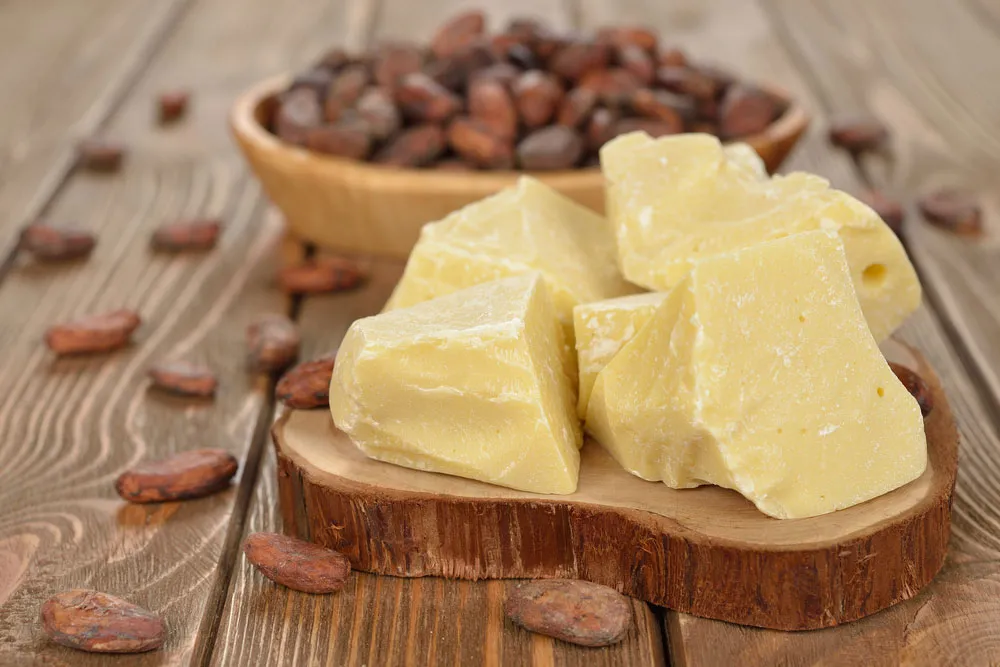
Cocoa butter is one of the most valuable plant-based fats used across industries today. Extracted from cocoa beans, it is best known for giving chocolate its smooth, melt-in-your-mouth texture. But its value extends far beyond food—it’s widely used in cosmetics, skincare, pharmaceuticals, and wellness products.
Naturally rich in fatty acids, antioxidants, and vitamin E, cocoa butter is praised for its moisturizing properties and long shelf life. It has a soft, creamy texture, a mild chocolate scent, and a stable composition that makes it ideal for both edible and topical products.
In food production, cocoa butter is essential in shaping the consistency of chocolate, truffles, and confections. Its ability to remain solid at room temperature and melt at body temperature makes it perfect for creating that satisfying chocolate snap. In skincare, its emollient qualities help protect and restore skin, which is why it’s a common ingredient in body lotions, balms, lip care, and massage oils.
Cocoa butter is available in various forms—natural, refined, deodorized, and organic. Each type serves different needs, depending on the intended use. For example, food manufacturers may prefer food-grade, filtered butter, while cosmetic brands often choose unscented cocoa butter for product flexibility.
With global trends moving toward clean-label products and plant-based ingredients, the demand for cocoa butter has increased significantly. In places like Dubai, UAE, and even GCC countries, both local manufacturers and international buyers are sourcing bulk cocoa butter to meet rising production needs in chocolates, skincare, and wellness.
Understanding the source, grade, and application of cocoa butter is essential when selecting the right product for your business—whether you’re in food, beauty, or health sectors.
How Cocoa Butter Is Made (From Bean to Butter)
Cocoa butter starts its journey inside the humble cocoa bean, which grows in tropical regions, especially across West Africa and South America. These beans are the seeds of the cacao tree, and once harvested, they go through several steps before becoming the smooth, golden butter used in products we see every day.
1. Harvesting and Fermentation
The process begins when ripe cocoa pods are harvested and split open to reveal the beans surrounded by a sweet pulp. These beans are scooped out and left to ferment naturally for several days. Fermentation is key—it develops the chocolate flavor and reduces the natural bitterness.
2. Drying and Roasting
Once fermentation is complete, the beans are dried in the sun. After drying, they’re shipped to processing facilities, where they’re roasted at controlled temperatures. Roasting enhances the flavor and loosens the shell from the nibs (the edible part inside).
3. Cracking and Grinding
The roasted beans are cracked open and the nibs are separated from the shell. The nibs are then finely ground into a thick paste called cocoa liquor (or cocoa mass), which contains both non-fat cocoa solids and cocoa butter.
4. Pressing the Cocoa Butter
To extract the butter, the cocoa liquor is placed in a hydraulic press that applies intense pressure. This separates the cocoa butter (the fat) from the cocoa solids (which are later used to make cocoa powder). What remains is a pale yellow fat that’s solid at room temperature—this is raw cocoa butter.
5. Refining and Filtering
Depending on the intended use, cocoa butter may be left natural or go through further refining. It can be filtered, deodorized, or refined to remove the chocolate aroma, color, or impurities—making it ideal for cosmetic or pharmaceutical applications.
6. Forming and Packaging
Once refined, cocoa butter is poured into molds and solidified into blocks, chips, or disks. It is then packed in food-safe, airtight packaging to preserve freshness and prevent oxidation.
This careful process helps retain the butter’s nutrients while making it versatile for multiple industries. Whether used in gourmet chocolate or luxury skincare, high-quality cocoa butter always begins with good farming practices, clean processing, and reliable sourcing.
Perfect! Here’s Section 3: Types of Cocoa Butter and Their Differences — clear, informative, and naturally written to help readers (especially buyers or manufacturers) understand what kind of cocoa butter they may need.
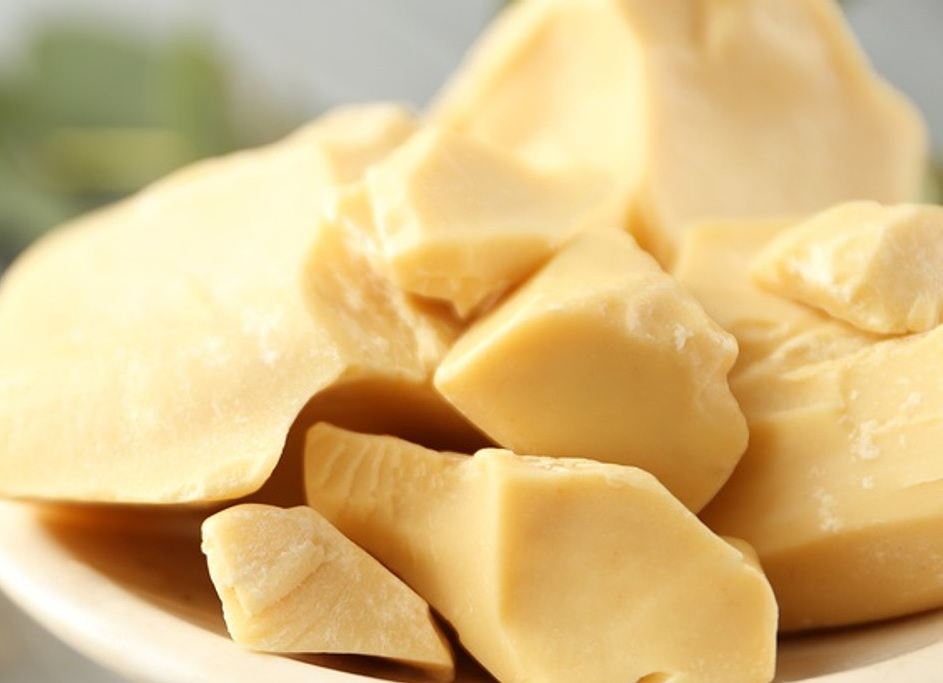
Types of Cocoa Butter – Natural, Refined, Organic, and Unscented
When sourcing cocoa butter—especially in bulk—it’s important to understand the different types available in the market and how they suit different industries. Whether you’re a food manufacturer, cosmetic formulator, or health brand, knowing the difference can help you choose a product that aligns with both quality and performance needs.
Let’s break down the four main categories: natural, refined, organic, and unscented cocoa butter—all of which are available through trusted cocoa butter suppliers in Dubai like RADAD International.
Natural Cocoa Butter (Unrefined)
This is cocoa butter in its most original state. It’s extracted from roasted cocoa beans through cold pressing or expeller pressing, without the use of chemical solvents or high-heat refining.
Key Characteristics:
- Color: Pale yellow to ivory
- Scent: Strong, pleasant chocolate aroma
- Texture: Solid at room temperature, melts on skin contact
- Shelf Life: Typically 2–5 years, depending on storage
Uses:
- Premium artisanal chocolate
- Organic skincare products
- Raw food products and vegan recipes
- Lip balms, massage bars, and natural body butters
Buyer Notes: If you’re focused on quality and want to retain the cocoa butter’s natural antioxidants and phytochemicals, this is the type to go for. It’s rich in vitamin E, stearic acid, and oleic acid, all of which are beneficial for skin and health.
Things to note: Natural cocoa butter has a strong smell and may vary slightly in color or texture based on its origin. This is often preferred by small-batch manufacturers who want to keep products as close to nature as possible.
Refined Cocoa Butter
Refined cocoa butter goes through a deodorization and filtration process that removes most of its color, aroma, and sometimes a small portion of its natural nutrients. This process makes it more neutral and versatile for manufacturers who want control over the final fragrance and color of their product.
Key Characteristics:
- Color: Creamy white to light beige
- Scent: Odorless or very mild
- Texture: Smooth, uniform
- Shelf Life: 2–5 years
Uses:
- Fragrance-free or hypoallergenic skincare
- Pharmaceutical products
- Large-scale chocolate production (especially white chocolate)
- Confectionery coatings and fillings
Buyer Notes:
If your product line requires a base that won’t interfere with scents, flavors, or colors—refined cocoa butter is the right option. It’s also often preferred for medical and baby care formulations.
Organic Cocoa Butter
Organic cocoa butter can be either refined or unrefined, but the key difference is in the sourcing and certification. It comes from organically grown cocoa beans—cultivated without pesticides, synthetic fertilizers, or genetically modified organisms (GMOs).
Key Characteristics:
- Certified organic by regulatory bodies (USDA, EU, etc.)
- Traceable sourcing
- Often cold-pressed for minimal processing
Uses:
- Certified organic food and skincare
- Health and wellness products
- Clean label cosmetics
Buyer Notes: Organic cocoa butter is a premium choice. If your brand emphasizes sustainability, health, and transparency, this is worth the investment. Dubai is seeing an increasing demand for organic cocoa butter, especially from wellness-driven brands and gourmet chocolatiers.
Unscented Cocoa Butter
This term often refers to refined cocoa butter, but it can also apply to deodorized unrefined butter. It’s treated to eliminate the strong chocolate scent, which can be overpowering in some formulations.
Key Characteristics:
- Fragrance-free
- Smooth consistency
- Ideal for adding custom essential oils or perfumes
Uses:
- Sensitive skincare
- Hair care products
- Products requiring custom scent profiles
Buyer Notes: When shopping for unscented cocoa butter in Dubai, always check if the deodorizing method used aligns with your brand values. Some methods are chemical-free (steam deodorizing), while others may involve solvents.
Comparison Table: Types of Cocoa Butter
| Type | Color | Scent | Best For | Processing |
| Natural (Unrefined) | Yellow/Ivory | Rich chocolate | Organic skincare, artisan chocolate | Cold-pressed or expeller |
| Refined | White/Cream | Neutral or none | Hypoallergenic cosmetics, pharma, white chocolate | Deodorized and filtered |
| Organic | Varies (must be certified) | Varies | Certified organic brands, clean beauty, wellness foods | Depends (but organic-certified methods only) |
| Unscented | White or off-white | Fragrance-free | Scented products, sensitive skin formulations | Typically refined |
Buyer Considerations
Before purchasing cocoa butter in Dubai—especially in bulk—ask the following:
- Is it food-grade or cosmetic-grade?
- Has it been tested for heavy metals and contaminants?
- Is the product certified organic (if needed)?
- What method was used for deodorization?
- What’s the minimum order quantity?
- How is it packaged (blocks, chips, or pails)?
- What’s the shelf life and ideal storage condition?
Choosing the right type will depend on what you’re creating and the values your brand upholds. Whether it’s bulk cocoa butter for food or cosmetics, selecting the right supplier with transparent sourcing and processing is just as important as the product itself.
Nutritional Value and Benefits of Cocoa Butter
Cocoa butter isn’t just prized for its smooth texture or aroma—it’s also valued for its rich nutritional profile. Whether it’s going into a luxury chocolate bar or a nourishing body cream, cocoa butter brings a lot more to the table than just aesthetics. Its healthy fat composition, antioxidant content, and moisturizing properties make it one of the most versatile natural ingredients on the market.
1. What’s Inside Cocoa Butter?
Cocoa butter is mainly made up of healthy fats, including:
- Stearic acid – a saturated fat that is known for its stability and is commonly used in skincare.
- Oleic acid – a monounsaturated fat also found in olive oil, beneficial for heart health.
- Palmitic acid – helps form a protective layer on the skin, preventing moisture loss.
- Polyphenols – powerful antioxidants that help fight inflammation and protect the skin and body.
These compounds make cocoa butter not just a filler ingredient, but a functional one—both for internal consumption and topical use.
2. Nutritional Benefits (for Food Applications)
When used in food, especially chocolate production, cocoa butter contributes more than just smooth texture and melt-in-the-mouth feel. It’s also:
- Rich in healthy fats – providing energy and helping to support brain and cell function.
- Free from trans fats – which makes it a better option compared to many synthetic fats.
- Naturally cholesterol-free – which makes it ideal for health-focused food brands.
Keep in mind: cocoa butter is calorie-dense, so while it’s beneficial, moderation is key—especially in consumer food products.
3. Skincare and Cosmetic Benefits
In the beauty and personal care industry, cocoa butter is prized for its deep moisturizing properties and healing effects on the skin. It is:
- Highly moisturizing – ideal for dry and cracked skin.
- Known to improve skin elasticity – making it popular in anti-aging and stretch mark creams.
- Gentle and non-irritating – even for sensitive skin, especially in its unscented or refined form.
That’s why cocoa butter is commonly used in body lotions, lip balms, baby products, and even in post-surgical skincare.
Nutrient Composition of Cocoa Butter (Per 100g)
| Nutrient | Amount | Function/Benefit | ||
| Total Calories | ~884 kcal | High energy value, suitable for calorie-dense products | ||
| Total Fat | 100 g | Source of healthy fats, contributes to texture and energy | ||
| Saturated Fat | ~60 g | Mainly stearic and palmitic acids, contributes to stability and texture | ||
| – Stearic Acid | ~34 g | Neutral effect on cholesterol, provides firmness in cosmetics and food | ||
| – Palmitic Acid | ~25 g | Skin-protective, used in skincare for its emollient properties | ||
| Monounsaturated Fat | ~33 g | Includes oleic acid, known to support heart health | ||
| – Oleic Acid | ~33 g | Similar to the fat found in olive oil; softens skin and improves product absorption | ||
| Polyunsaturated Fat | ~3 g | Includes linoleic acid; beneficial in moderation | ||
| Cholesterol | 0 mg | Naturally cholesterol-free | ||
| Sodium | 0 mg | No added salt, ideal for low-sodium diets | ||
| Antioxidants (Polyphenols) | Present | Help fight oxidative stress, beneficial in skin repair and aging prevention | ||
| Vitamin E | Trace amounts | Contributes to skin health, natural preservative in some formulations |
Note: Values are approximate and can vary slightly depending on processing method and origin.
Health & Wellness Benefits of Cocoa Butter
Cocoa butter’s nutritional value makes it more than just a cosmetic or food base. It offers several health-supporting benefits:
- Heart-Healthy Fats: The monounsaturated fats—especially oleic acid—are known to support cardiovascular health when consumed as part of a balanced diet.
- Neutral Cholesterol Impact: Unlike other saturated fats, stearic acid (a major component of cocoa butter) does not raise LDL cholesterol, making it safer for heart health.
- Antioxidant Support: Cocoa butter naturally contains antioxidants that may help protect the skin and body from free radical damage.
- Skin Repair: In cosmetic applications, it supports skin barrier function and helps restore moisture, especially in harsh climates like the UAE.
Why It’s a Smart Ingredient Choice
Whether you’re formulating chocolates, lip balms, soaps, or skin creams, cocoa butter provides more than just consistency. It adds value through its nutritional content and natural origin—something modern consumers are increasingly demanding.
- For food products: It offers a smooth mouthfeel, high melting point, and long shelf life.
- For skincare: It helps improve skin tone, hydration, and elasticity—without harmful additives.
- For clean-label formulations: It’s a recognizable, natural ingredient that builds consumer trust.
Quick Summary:
- Cocoa butter is high in antioxidants and good fats.
- It’s used in both food and cosmetics for its nourishing and textural properties.
- It supports skin health, improves product quality, and aligns with clean-label trends.
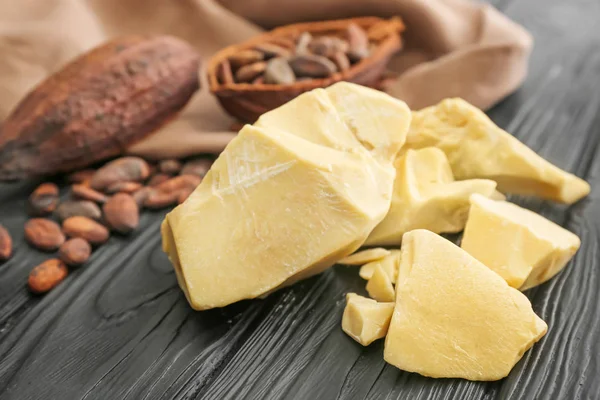
Natural vs. Refined Cocoa Butter – What’s the Difference and Which Should You Use?
Understanding the difference between natural and refined cocoa butter is key—especially if you’re a manufacturer, formulator, or business owner trying to choose the right ingredient for your product line. Both types offer unique benefits, but they serve different needs depending on the final application.
Let’s break them down:
Natural Cocoa Butter (Unrefined)
This is cocoa butter in its purest form—pressed from roasted cocoa beans with minimal processing.
Characteristics:
- Color: Pale yellow or ivory
- Scent: Distinct, rich chocolate aroma
- Texture: Firm at room temperature, melts when warmed
- Processing: Cold-pressed or expeller-pressed, no chemical additives
Common Uses:
- Gourmet chocolate production
- Organic skincare and beauty products
- Artisan soaps and body butters
Why choose natural Cocoa Butter? If you’re working on a product that embraces clean, minimal ingredients—or if you want that authentic chocolate scent in your skincare or food—natural cocoa butter is the way to go. It retains more antioxidants and beneficial compounds, which are often reduced during heavy refining.
Refined Cocoa Butter
Refined cocoa butter is processed to remove color, odor, and some of the naturally occurring compounds found in the raw version.
Characteristics:
- Color: White to light cream
- Scent: Odorless or very mild
- Texture: Smooth and consistent
- Processing: Deodorized and filtered for purity
Common Uses:
- Fragrance-free skincare and cosmetics
- Pharmaceutical formulations
- Large-scale chocolate production where a neutral base is needed
Why choose refined? Refined cocoa butter is perfect for applications where consistency and a neutral smell are important—like creams, lipsticks, or lotions that will be scented or colored later. It’s also ideal in pharmaceuticals, where purity and shelf stability are crucial.
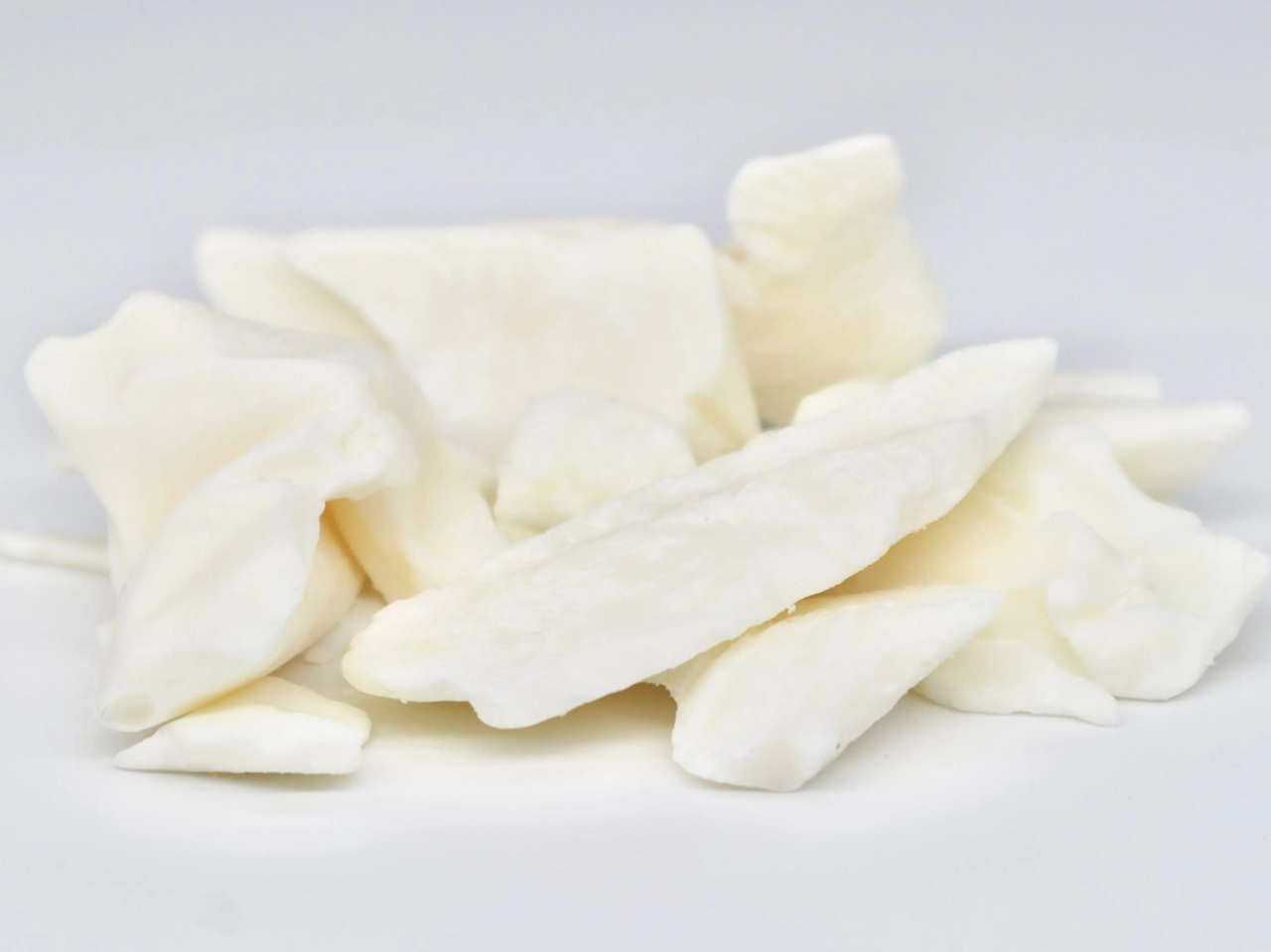
Choosing the Right Cocoa Butter for Your Needs
If you’re in the food industry, food-grade cocoa butter—whether natural or refined—is essential. If you’re creating skincare or haircare products, cosmetic-grade cocoa butter (refined or unscented) might be better. And if you want to appeal to the organic market, certified organic cocoa butter is worth the investment.
Sourcing the right type isn’t just about quality—it’s also about ensuring the product meets your formulation needs, brand values, and customer expectations.
Which One Should You Use?
| Purpose | Recommended Type | Reason | ||
| Gourmet chocolate | Natural cocoa butter | Rich flavor and authentic aroma | ||
| Organic or clean skincare | Natural cocoa butter | Retains beneficial nutrients and antioxidants | ||
| Unscented skincare | Refined cocoa butter | Odorless, blends better with added fragrances | ||
| Pharmaceutical use | Refined cocoa butter | High purity, consistent texture | ||
| DIY crafts & handmade goods | Natural or refined | Depends on scent preference and project type | ||
| High-volume manufacturing | Refined cocoa butter | Easier to standardize and scale |
In short, both types of cocoa butter serve a purpose. Whether you choose natural or refined cocoa butter in the UAE depends on your goals, ingredients list, and product category.
Where to Source High-Quality Cocoa Butter in Dubai, UAE
In a market where quality, consistency, and reliability are non-negotiable, finding a trustworthy cocoa butter supplier can make or break your product line. For businesses based in the UAE—especially those seeking wholesale cocoa butter in Dubai, one name that stands out is RADAD International.
RADAD International has built a strong reputation as one of the top cocoa butter exporters in the UAE, providing premium-grade cocoa products to manufacturers, retailers, and formulators across food, cosmetics, and pharmaceutical industries.
Why Source Cocoa Butter From RADAD International?
RADAD International offers a range of cocoa-based ingredients, but its cocoa butter is especially valued for the following:
- Consistent Quality Their cocoa butter is processed using industry best practices to maintain purity and functionality. You can choose from natural, refined, unscented, or organic cocoa butter, depending on your application.
- Bulk Supply with Flexible Packaging Whether you need it in large blocks, chips, or pails, RADAD ensures their cocoa butter is easy to work with and store, even at scale. This is ideal for businesses that need bulk cocoa butter in Dubai for ongoing production.
- Food-Grade & Cosmetic-Grade Options All their cocoa butter products are compliant with food safety and cosmetic manufacturing standards. Whether you’re making premium chocolate or nourishing skin butters, RADAD has you covered.
- Traceable Sourcing Their cocoa butter is sourced from reputable origins, with a focus on sustainability and ethical practices—an increasingly important factor for both end consumers and regulatory bodies.
- Prompt UAE Delivery Based in Dubai, RADAD International offers quick and reliable delivery across the UAE, reducing lead time for your manufacturing cycles.
Popular Use Cases Among RADAD Customers
- Chocolatiers: Use RADAD’s food-grade cocoa butter in the UAE for gourmet, artisanal, or mass-market chocolate.
- Skincare Brands: Prefer their unscented and organic cocoa butter for natural face creams, soaps, and lotions.
- Beverage Companies: Use refined cocoa butter for creamy textures in health drinks and plant-based shakes.
- Cosmetic Manufacturers: Trust RADAD’s consistent supply of refined cocoa butter in Dubai for makeup removers, lipsticks, and body moisturizers.
How to Buy Cocoa Butter in Dubai from RADAD International
Sourcing cocoa butter from RADAD is straightforward. You can:
- Reach out for quotes and product specifications
- Request samples for lab testing or R&D
- Arrange bulk delivery or recurring supply agreements
- Get support with logistics, documentation, and product certificates
If you’re a business looking to scale or elevate the quality of your end products, partnering with a dependable supplier like RADAD can give you an edge in the competitive Dubai market.
FAQs About Cocoa Butter
What is the shelf life of cocoa butter?
Pure cocoa butter has an impressive shelf life of 2 to 5 years when stored in a cool, dry place away from sunlight. This makes it ideal for bulk purchasing, especially for businesses that require long-term storage.
How can I tell if cocoa butter is high quality?
Quality cocoa butter will have:
- A firm texture but will melt easily in your hands
- A pleasant, mild chocolate aroma (for natural types)
- A smooth, creamy feel without any waxiness or residue
It should also come with lab reports or quality certifications, which RADAD International provides with all bulk orders.
What’s the difference between deodorized and unscented cocoa butter?
Deodorized cocoa butter (often called refined or unscented) has been processed to remove its natural scent and color. This is preferred in cosmetics where fragrance-free formulations are required. Unscented cocoa butter still retains its moisturizing benefits while offering more formulation flexibility.
Can cocoa butter be used for both food and skincare?
Yes, but they must meet different safety standards. Food-grade cocoa butter in Dubai must be produced in certified facilities and comply with food safety regulations. Cosmetic-grade cocoa butter must meet dermatological safety standards. RADAD International offers both, depending on your application.
Is there a difference between natural and organic cocoa butter?
Yes. While natural cocoa butter is minimally processed, organic cocoa butter in the UAE must be sourced from organically grown cocoa beans and certified by recognized organic bodies. Organic cocoa butter is free from pesticides and synthetic inputs, making it ideal for clean-label or eco-conscious brands.
What are the common packaging options when buying in bulk?
Bulk cocoa butter is commonly available in:
- 25 kg blocks
- 5 kg or 10 kg pails
- Chips or pellets
- Vacuum-sealed bags for longer shelf life
RADAD International provides flexible packaging depending on your order size and usage preferences.
How do I store cocoa butter in Dubai’s climate?
In the UAE’s warm environment, it’s important to store cocoa butter:
- In a cool room (ideally below 25°C)
- Away from direct sunlight
- In sealed containers to prevent oxidation
Temperature-controlled storage is highly recommended for long-term stability.
Does cocoa butter contain caffeine or theobromine?
Cocoa butter contains trace amounts of theobromine and almost no caffeine. These compounds are more concentrated in cocoa solids rather than in the fat portion, which makes cocoa butter a gentle ingredient for sensitive formulations.
Can cocoa butter be combined with other oils?
Yes, cocoa butter blends well with shea butter, coconut oil, jojoba oil, and essential oils. This makes it versatile in formulating body butters, balms, lotions, and even food recipes like chocolate spreads.
How can I place a bulk order in the UAE?
For serious buyers looking for cocoa butter distributors in Dubai, you can:
- Contact RADAD International through their website or business lines
- Request technical specs, samples, and MOQs
- Discuss delivery timelines and payment options for bulk or recurring orders
RADAD supports businesses in food production, cosmetics, pharmaceuticals, and even niche markets like artisanal chocolatiers and wellness brands.
In Dubai and across the UAE, the demand for high-grade cocoa butter—be it food-grade, refined, organic, or natural—continues to grow. From its powerful moisturizing properties and antioxidant-rich composition to its essential role in fine chocolate, cocoa butter has become a staple in both consumer goods and commercial industries.
With years of expertise, RADAD International stands out as one of the top cocoa butter exporters in the UAE, delivering quality-focused, bulk solutions tailored to your specific needs. Backed by consistent supply, transparent sourcing, and product traceability, RADAD is helping businesses thrive—one batch at a time.
If you’re ready to take your product to the next level, whether you’re in food, beauty, or wellness, cocoa butter is a smart, versatile, and valuable investment.



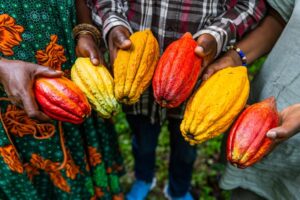

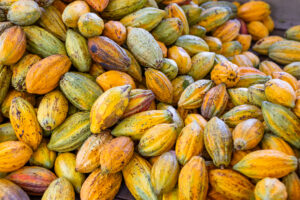
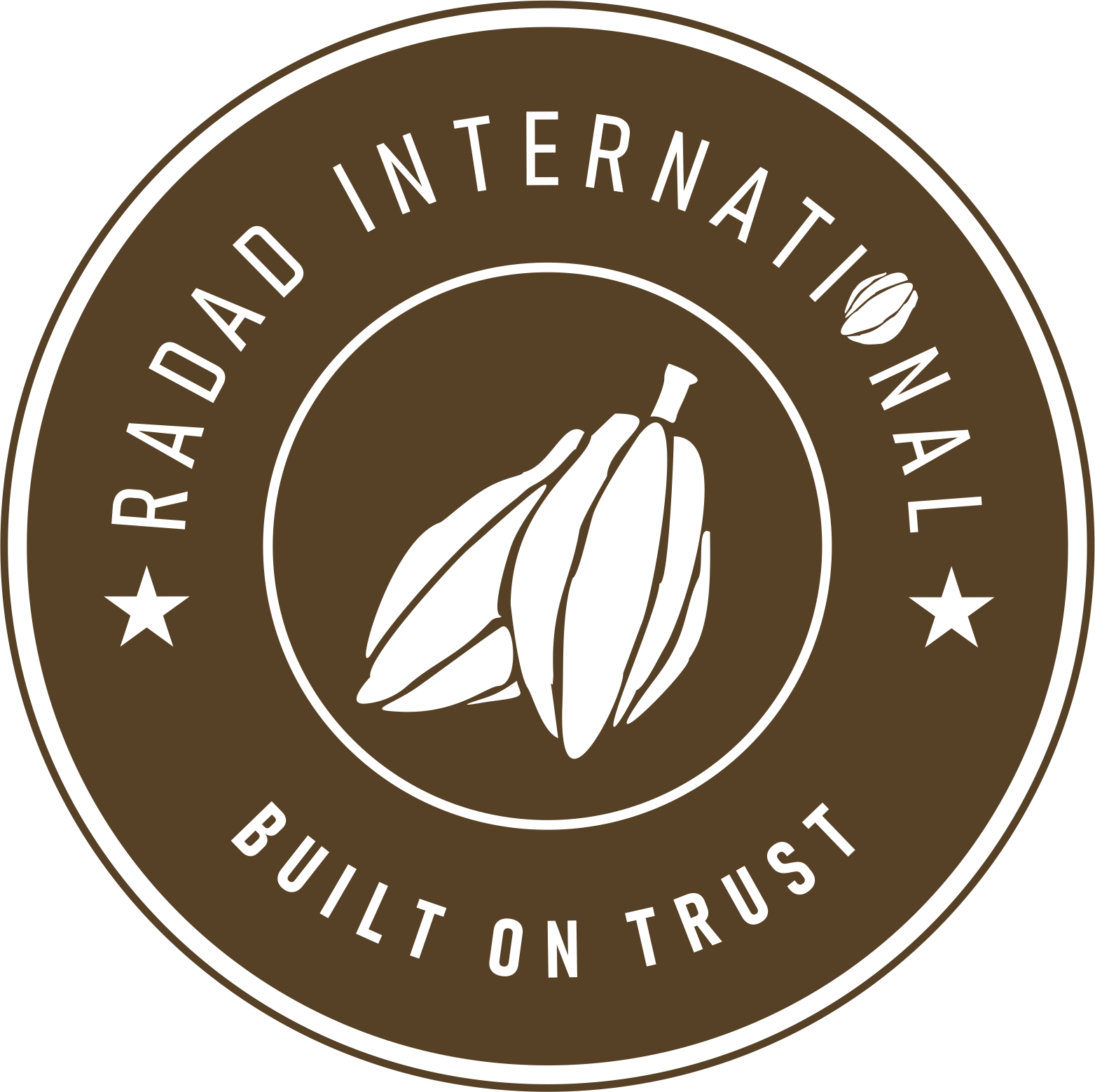
2 Responses
wohh just what I was looking for, thanks for posting.
You are most welcome
I am glad it helped